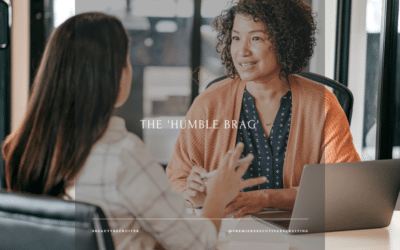The beauty industry is a visual landscape for designers, product developers, marketers, packaging developers and countless other positions. This creates great opportunity to showcase your talents with a customized portfolio. There are key factors to present a portfolio strategically during the interview process. Over the last 15 years, I have guided professionals on how to present a portfolio to elevate their credibility during the interview process with the following tips:
Read your audience. Not everyone is visual, therefore you need to take cues from your audience. For example, if the interview is rushed or if the individual(s) giving the interview is quick to move from topic to topic, this is not going to be the audience that has the time nor patience to review a portfolio. In addition, the ‘Round Robin’ interview processes is becoming more common and presenting a portfolio to each team member will also not make sense. I recommend showcasing your work to those who would benefit from viewing it the most. Those professionals would include the individuals that you would be reporting to and any other C- level/VP level executives that you would partner directly with. Again, this goes to show how very important it is to read your audience.
Timing is everything: I’ve seen all approaches: professionals who dive into the portfolio the minute the interview starts (which is not recommended) to those who leave their portfolio behind (also not recommended for a variety of reasons). Leaving your portfolio behind doesn’t allow you to discuss your direct involvement in the work as most projects involve multiple team members. It’s important that you communicate your direct involvement with the visual work example and the impact that the work made to the brand is addressed for credibility purposes. Also, assumptions about your work can be made when a discussion does not take place, which generally works against the professional.
Showcase your work based on topics discussed during the interview process: Say a potential employer is discussing a rebranding objective and you mention, “I have managed a rebranding strategy and have a few supporting images that can show the brand prior and the impact my work has had on the brand post re-brand strategy.” (Side note: this is an excellent opportunity to showcase your work from the portfolio). Based on the feedback, you would use this opportunity to discuss your strategy, execution, and impact of the rebrand strategy with your portfolio while providing a visual effect to demonstrate your area of expertise.
Don’t take credit for work you have not done directly: The beauty industry is a very small community and I’ve seen professionals take credit for group effort. This will automatically diminish your credibility. Stating “I directly managed this” as opposed to “my team developed this” could be damaging to your credibility. Give credit where credit is due.
Tell the story: As beauty professionals, we are in the business of telling stories ranging from the brand story to the product story and beyond. A portfolio should have work examples that tell stories based on the direct work involved: concept creation, process, challenges, team support, and impact. Most professionals are visual and this strategy will elevate your credibility during the interview process.
Digitize your portfolio: A modern portfolio should be accessible on an iPad or small smart device/computer which will enable you to flip through and customize your approach. By doing so, you will also be able to display images that are relative and will build credibility with the brand. For example, if you’re interviewing with a Prestige beauty brand, focus your portfolio on work examples within the Prestige segment as opposed to Mass (unless Mass is relevant). Align visuals that aesthetically demonstrate your abilities in their direct market/distribution channel to build relative credibility.
Adapting to your audience is key during the interview process. Recruiters can give endless advice but it is up to you as the professional to use your best judgment during the interview process in order to engage with your audience and garner their attention based on the flow of conversation, objectives shared, and unique personalities. A portfolio is a great method to showcase work but studying and gauging your audience is key!
Adapting to your audience is key during the interview process.
About Premier Executive Recruiting: We are a boutique recruiting firm focused on the beauty industry. We support national searches from C level to Mid-level placements across multiple disciplines. We take in pride in creating partnerships with beauty brands and professionals to identify the right match that is mutually beneficial. Follow our career page for the latest beauty trends, interview strategies and beauty job opportunities.
https://www.linkedin.com/company/premier-executive-recruiting/



